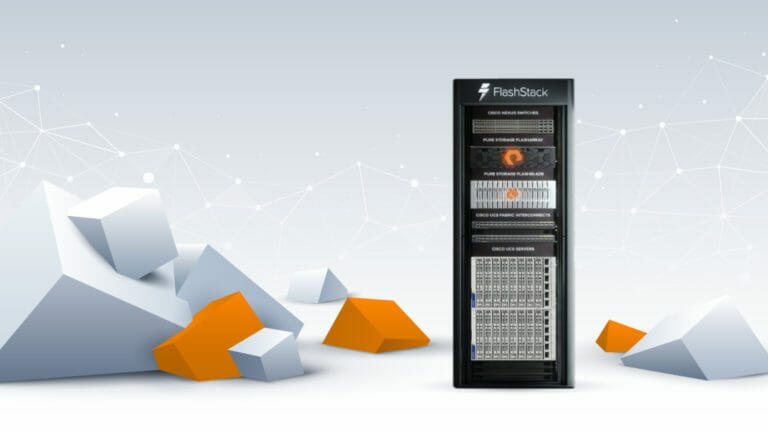I get asked this question a lot and I thought it would be a good opportunity to look at the technologies underpinning FlashStack® and expand on the real reason we see success with this solution.
Fundamentally, FlashStack relies on complementary components that are stateless in nature. This means that anyone can start using FlashStack for any use case, and as requirements change or expand or new opportunities present themselves in a business, FlashStack can be augmented or adjusted to meet this new requirement.
Let’s break down the fundamentals of FlashStack.
Related reading: 6 Common Storage Pitfalls FlashStack Defeats
Compute, Network, and Storage
The X-Series from Cisco represents a technology shift that incorporates a modular approach to compute that provides the ability to offer nodes with various CPU and GPU combinations. This allows businesses to scale a solution without having to change management planes.
Cisco has also introduced the 6500 series (fifth generation) Fabric Interconnects and 9108 Intelligent Fabric Modules that now support 100GbE Ethernet. In addition, Cisco’s new X-Fabric GPUs provide shared resources to all nodes in the chassis.
The great thing about the X-Series architecture is its modular approach. Components can be introduced or upgraded to add new technologies and innovation to the base solution without having to rearchitect or redesign how your infrastructure operates.
The same applies to Pure Storage® FlashArray™ and FlashBlade®. We introduced FlashArray with a modular design principle that enables new controllers and new DirectFlash® Module capacity to be added without having to fundamentally redesign or rearchitect your infrastructure. In fact, we built the Evergreen™ business model around our storage products. With an Evergreen Gold subscription, you’ll get free controller upgrades every three years. As a result, your storage stays modern.
Adding to this, Cisco Intersight can serve as the control plane for FlashStack to give you a single control plane to manage your full-stack solution. It offers one place with management integration into FlashArray and more. In addition, you can leverage infrastructure as code to automate the delivery of FlashStack and manage assets regardless of their physical location.
This stateless architecture allows both Cisco and Pure to offer FlashStack as a Service, leveraging Cisco Hybrid Cloud as a service with Pure as-a-Service™ (you can even order everything through Cisco’s commerce tool).
Thanks to the unique architecture of FlashStack hardware and software, customers have been able to think less about how to architect their infrastructure solution to support new workloads like hybrid cloud and containerization. These workloads inherently become part of the FlashStack solution through Cisco Validated Designs (CVDs). FlashStack delivers a single infrastructure solution that is able to adapt to new business requirements while providing innovation via new technologies and consumption models…
And that is the FlashStack difference.






